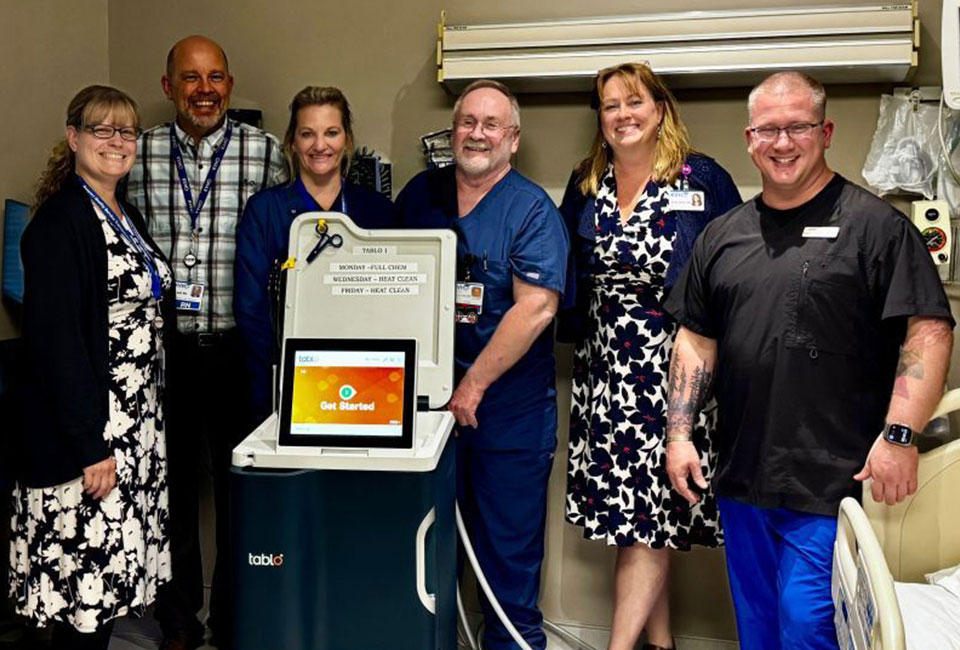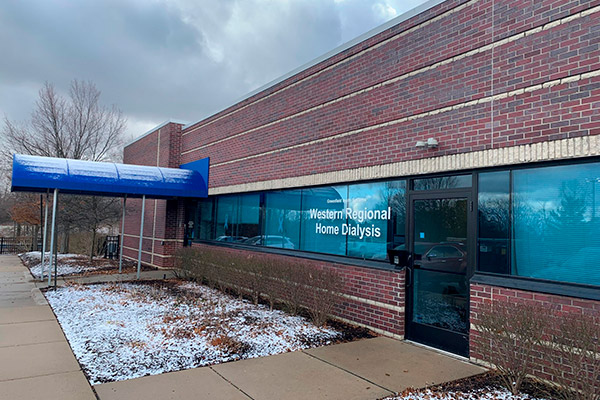Expanding Dialysis Access in Rural Communities: Success Stories from Critical Access Hospitals

Summary
Dialysis access in rural areas presents unique challenges, with patients frequently enduring long travel distances and limited treatment options. For Critical Access Hospitals (CAHs), developing a sustainable dialysis program requires overcoming significant operational and financial hurdles. Through strategic partnerships and innovative solutions, hospitals like Kittitas Valley Healthcare in central Washington are setting a new standard for delivering high-quality, localized care to their communities.
Tricia Sinek, who previously served as Strategic Coordinator at Kittitas Valley Healthcare, and Lisa Apperson, Dialysis Director for Critical Access Hospitals, shared how implementing the Tablo® Hemodialysis System in their facilities has transformed dialysis care for rurally-based patients.
This blog has been adapted from Tricia and Lisa’s conversation with Outset Medical. Quotes have been edited for length and clarity. To learn more, view the full webinar here.
The Need for Local Dialysis: A Critical Problem
When Tricia Sinek joined Kittitas Valley Healthcare, she encountered a pressing issue: patients who needed dialysis were routinely transferred out of the community, often over 40 miles away on dangerous mountain roads. During COVID-19, these challenges worsened, with one patient being transferred over 600 miles from Ellensburg, WA to Idaho Falls, ID for care.
For patients and loved ones, these distances created significant barriers. “These patients are frail and may not have resources to arrange travel,” explained Tricia.
Lisa Apperson, who has launched multiple dialysis programs in Kansas, emphasized the impact of distance on patients: “Transportation is an issue, and so that hour away gives them [time] back when they don’t have to do that anymore.”
The Path to Local Dialysis Programs
Kittitas Valley Healthcare recognized the critical need for local dialysis services and initially sought partnerships with major providers. However, both organizations faced capacity challenges during the pandemic and were unable to implement telenephrology solutions, leading it to develop its own in-house dialysis program
When external solutions fell through, the hospital turned to Outset’s Tablo for its user-friendly design. “The Tablo machine is amazing,” Tricia said. “It walks you through the whole process. So you don’t have to be an expert and you don’t have to be a mechanic, and it’s easy to operate.”
Strong partnerships with contracted nephrologists also played a key role in developing a local dialysis program. “We partnered with two nephrologists…they support us 24 hours a day, seven days a week, 365 days a year,” Tricia explained. These nephrologists provided telenephrology consults and managed patient care, offering critical expertise for the program’s success.
Overcoming Staffing and Training Challenges
Launching a dialysis program in a rural setting required addressing significant staffing and training hurdles. For many nurses, working with dialysis equipment was unfamiliar and intimidating. Lisa shared, “Some of them didn’t even want to walk in the room, they were so scared of the machines.”
The simplicity of Tablo, however, helped build confidence among staff. “I just had to remind them, pay attention to your screen. They were thinking they were going to have to go in there and just do it from memory,” explained Lisa. “After they got their hands on it, it made so much more sense,” Lisa explained.
At Kittitas Valley Healthcare, Tricia and her team worked to encourage staff engagement. “We opened up these positions to all of our nurses,” she explained, “and we had two nurses right away that wanted to go to the training. We have a third now that’s getting ready to go to training.”
Exceeding Financial Expectations: Patient Impact and Program Success
The impact on patients has been profound. Lisa recounted a story about their first patient: “He hated [dialysis at the previous facility]. Our social worker was looking through paperwork and realized that he’d had a DNR there. They asked him about the DNR, because we didn’t have that in the paperwork for us. And his response was, ‘Well, when I was going up there, I didn’t want anything done. But now that I’m going here, I want everything done.’”
“To me, that is the biggest compliment somebody can give anybody, especially coming from him,” continued Lisa. “We literally gave him his will to live back. And I don’t know how much better it gets in nursing.”
Tricia reflected on her program’s broader benefits: “It’s been a win for our patients, a win for our team in learning to take care of more acutely ill patients, and a win from a financial sustainability perspective.”
Financial and Operational Insights
Developing a dialysis program required detailed financial planning and a clear understanding of reimbursement complexities. “Part of my role is to look at clinical programs and then to build financial pro formas, so we have some idea of what the return will be for these programs,” Tricia explained.
Kittitas Valley Healthcare’s dialysis program quickly exceeded expectations. “We thought we’d do 25 dialysis runs the entire first year, and we’re going to exceed that,” Tricia shared. “In year two, as the program got underway and the local dialysis patients and physicians and everybody realized that we were able to do this…our revenue would run $784K to $805K, giving us a return on this investment of more than half a million dollars a year.”
Looking Ahead
For rural and critical access hospitals, adding dialysis services can be a game-changer for both patient care and hospital operations. With the right technology, strong partnerships, and thoughtful planning, these hospitals can overcome significant barriers to deliver high-quality care locally.
As Lisa aptly put it, “Build it, and they will come.”

